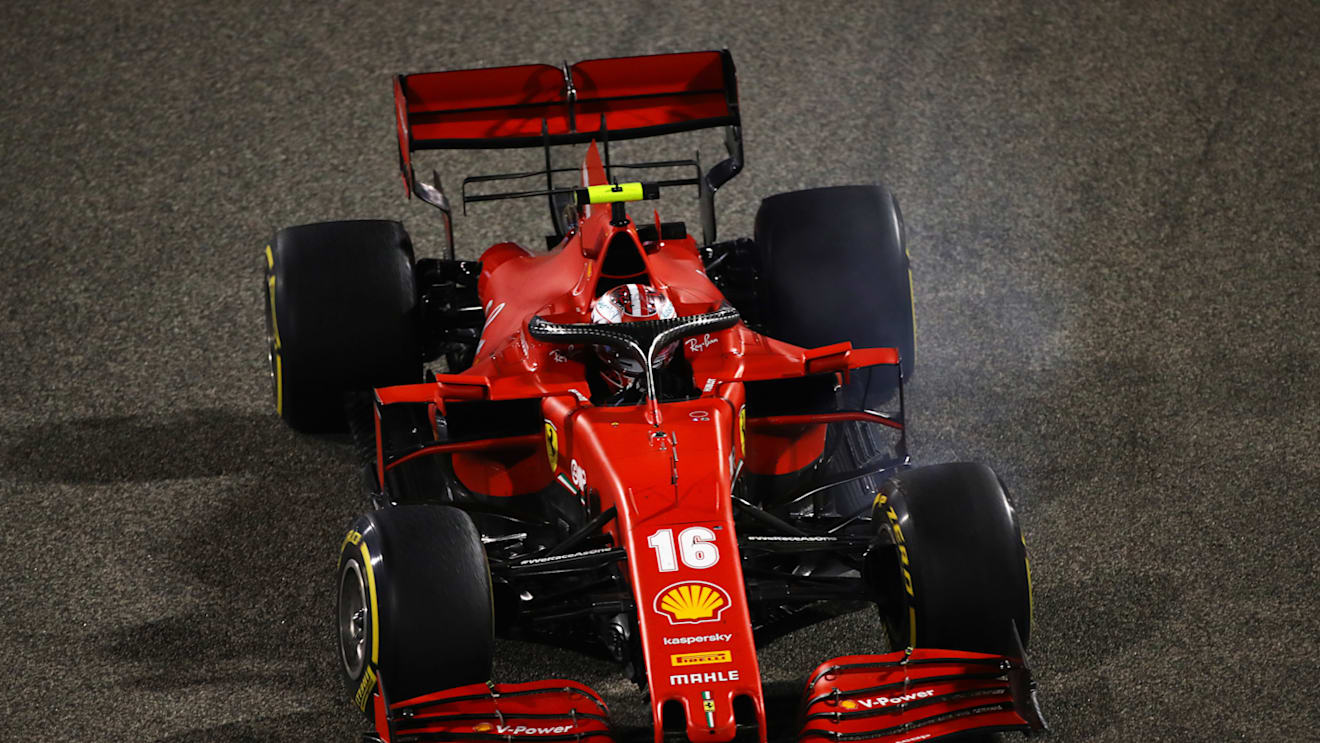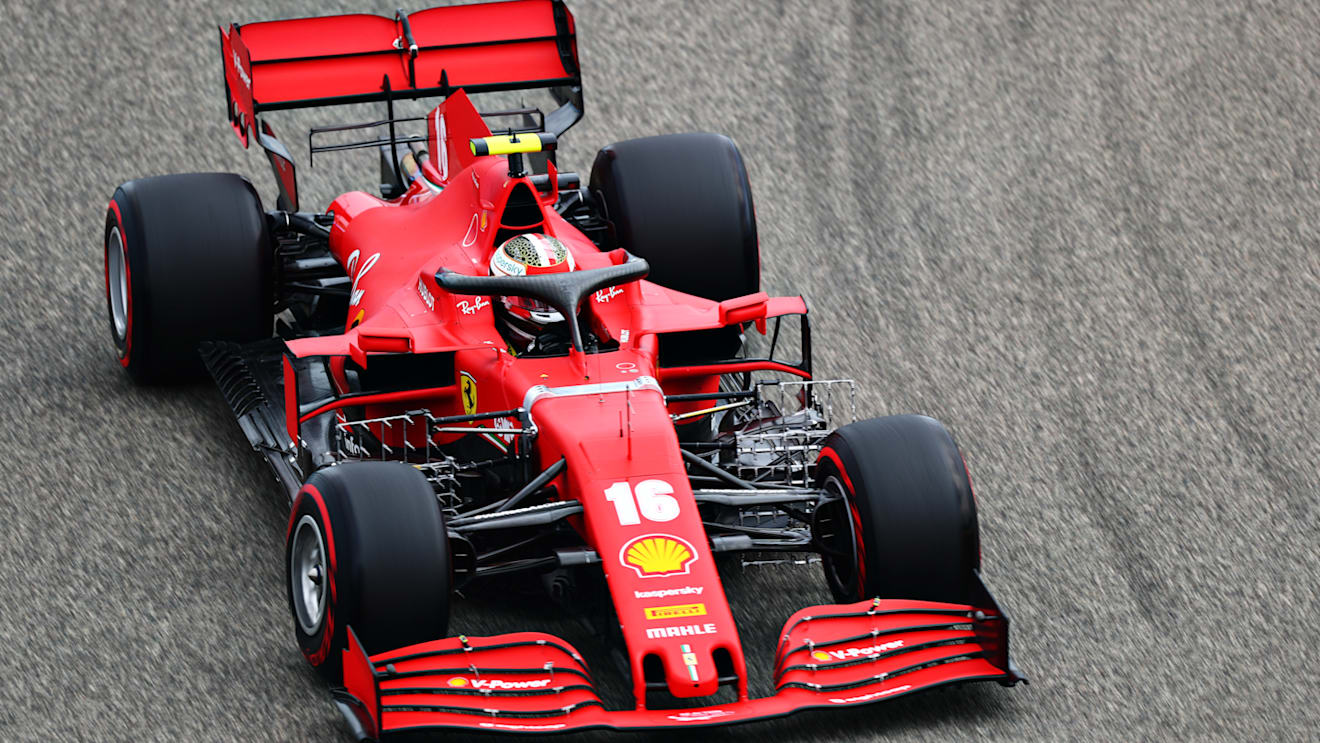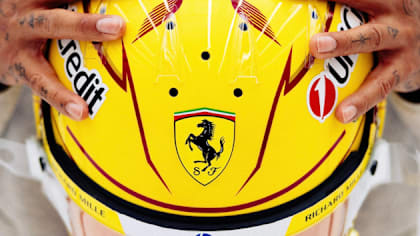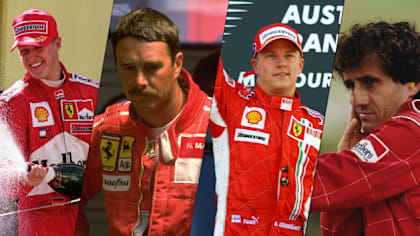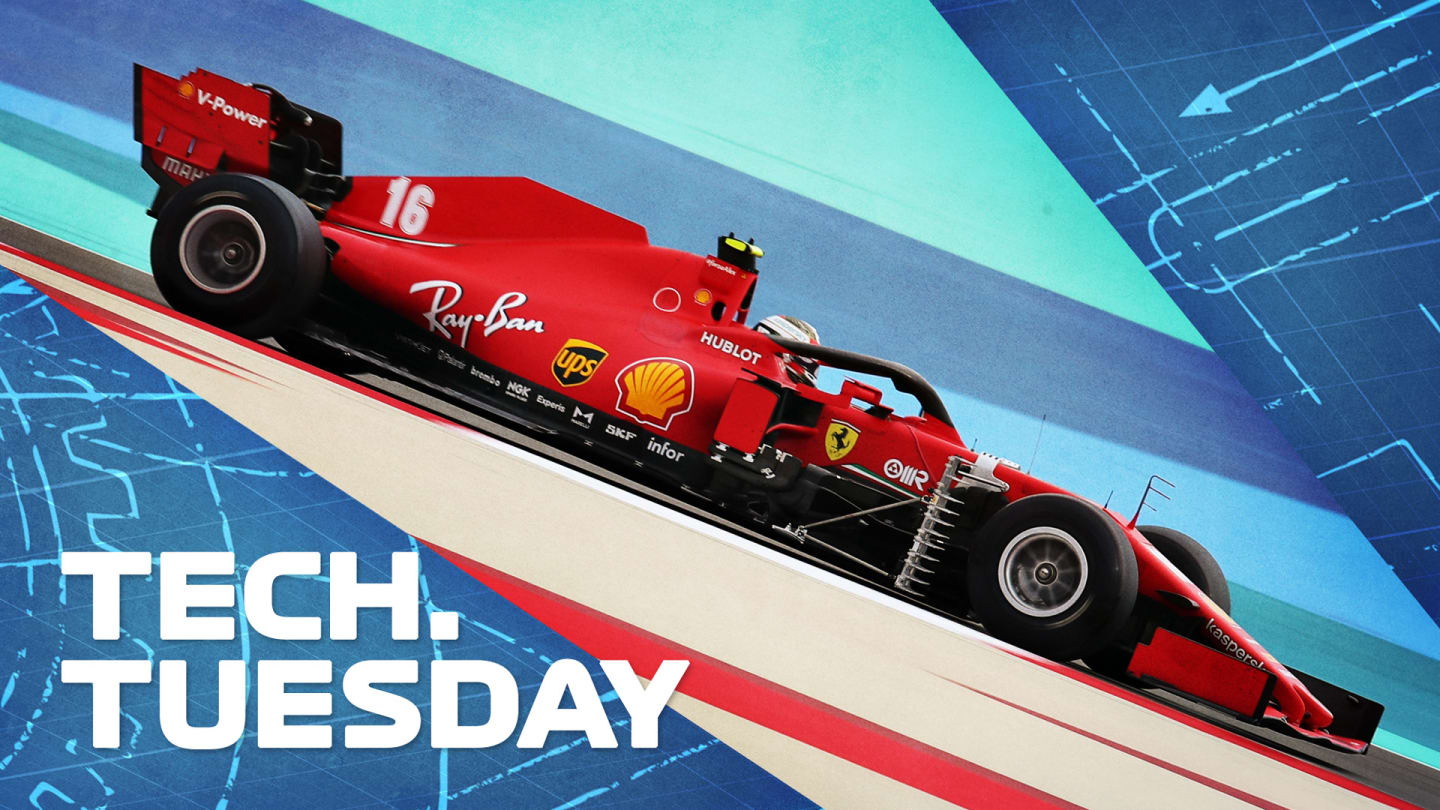
Technical
The key change Ferrari made between Friday and Saturday to claw back some speed in Bahrain

Share

Bahrain was far from Ferrari’s best Grand Prix of the season, but why was that the case? And how did the Scuderia pull some performance back between before qualifying on Saturday after a poor showing in practice? Mark Hughes explores the change made between Friday and Saturday to claw back a point in the Kingdom, with technical illustrations from Giorgio Piola.
Ferrari struggled somewhat in Bahrain after their recent improved form, with neither car making it to Q3 and with only one point scored in the race thanks to Charles Leclerc’s 10th-place finish.
READ MORE: Why the 2021 aero tweaks combined with new tyres could shake up the order next year
Bahrain is a power-sensitive track. It also places unusually high stresses on the rear tyres. The left-rear in particular. The Ferrari is intrinsically unsuited to both these demands, being down on power and with difficulties gaining adequate rear suspension control at low speeds, such as those at Sakhir’s Turn 10.
On Friday practice Ferrari ran with their conventional rear wing, of the standard medium-high type, as used in the last three races of Istanbul, Imola and Portimao. The car proved a long way off the pace. From vying to be the third-fastest car as recently as Portugal, it was suddenly only the seventh-fastest and barely any faster than the Alfa Romeo.
)
The 'conventional' Ferrari rear wing, without the spoon shape at the base
Furthermore, the rear tyre degradation was poor. But so was everyone’s. Ferrari were not particularly more badly afflicted than anyone else by the thermal degradation the track’s layout and surface induces.
READ MORE: What did we learn from the Eifel GP about ‘phase two’ of Ferrari’s upgrade package?
The surface is high-grip and the layout places extreme and repeated loads on the left-rear, both laterally and under acceleration. The straights are relatively short, giving very little time for the tyre to cool. Hence there is an accumulation of heat in the core of the tyre.
The competitive picture painted by Friday practice brought about a re-appraisal at Ferrari. A decision was made to go for the lower-downforce spoon-shape rear wing (below) to try to offset some of the costly power deficit.
1 / 2
This may sound counter-intuitive if rear tyre degradation was already a problem. But the thermal degradation at Sakhir is largely caused by the heat the repeated tractive forces under acceleration induce into the tyre’s core, rather than overheating of the surface caused by sliding.
The spoon-shaped wing retains the general architecture of the conventional one but has less flap area on the outboard ends, costing some downforce but giving less drag resistance at the draggiest part of any rear wing (the outboard).
)
The spoon-shaped rear wing has less flap area on the outboard ends, reducing drag resistance at that part of the wing
The spoon wing was run from Saturday and for the rest of the weekend. The change didn’t make for any magical improvement in form – the Ferrari qualified as the seventh-quickest car, albeit now much more comfortably ahead of Alfa Romeo – but the tyre degradation was reasonable enough to allow Leclerc to run the second-longest first stint of anyone – and the longest of anyone on the medium. Only the hard-tyred Pierre Gasly ran longer.
In looking for a more competitive race this coming weekend, Ferrari will be hoping that the power sensitivity of Sakhir’s outer track is less than that of the conventional circuit.
YOU MIGHT ALSO LIKE
News Hamilton shares first look at striking helmet design for new Ferrari chapter
Video LIVESTREAM: Watch all the action from Round 4 of the 2025 F1 Sim Racing World Championship
Feature 5 Ferrari moves that paid off – and 5 that didn’t – as Hamilton embarks on his new chapter
News Miami Grand Prix introduces One-Day Grandstand tickets for 2025
.png)
